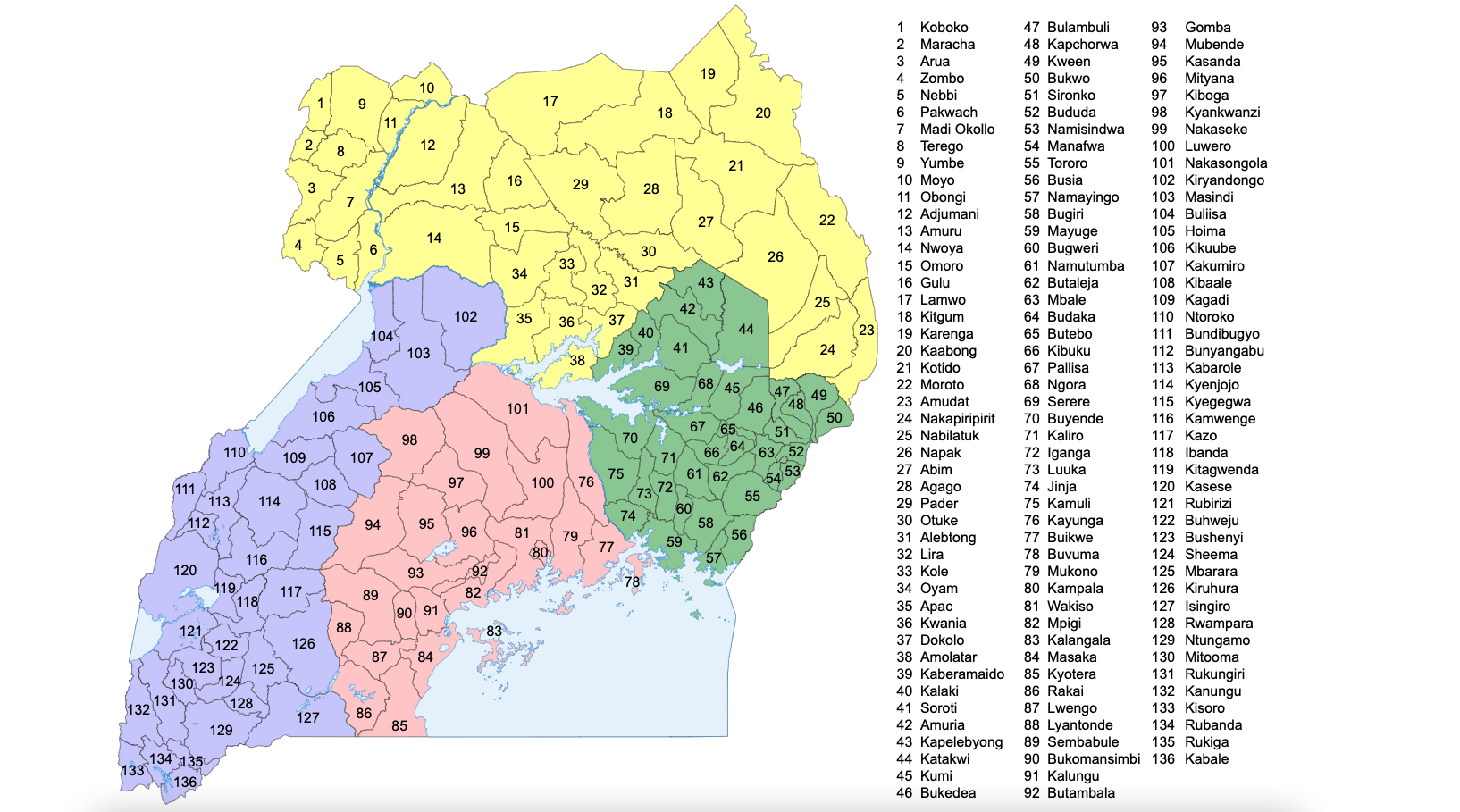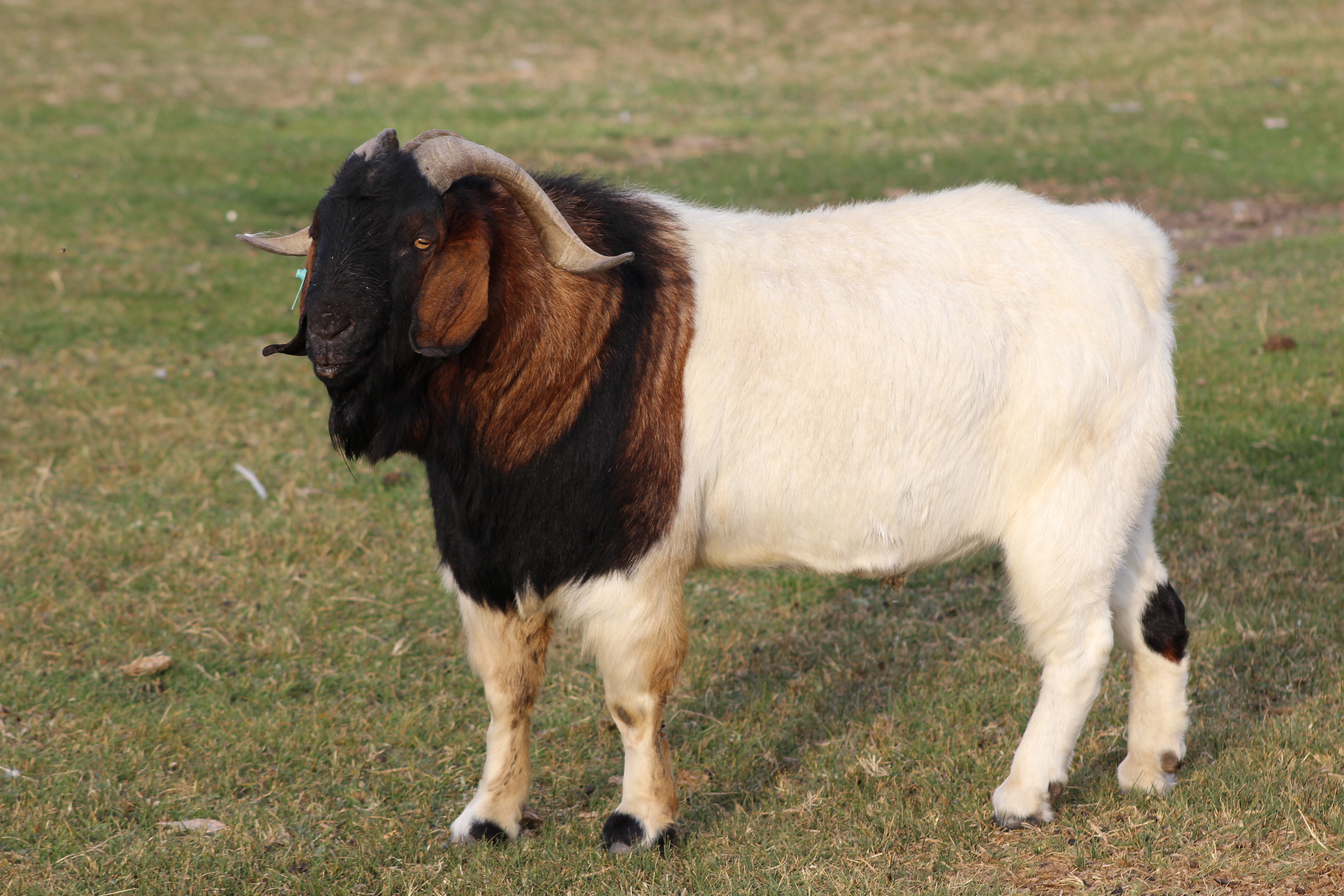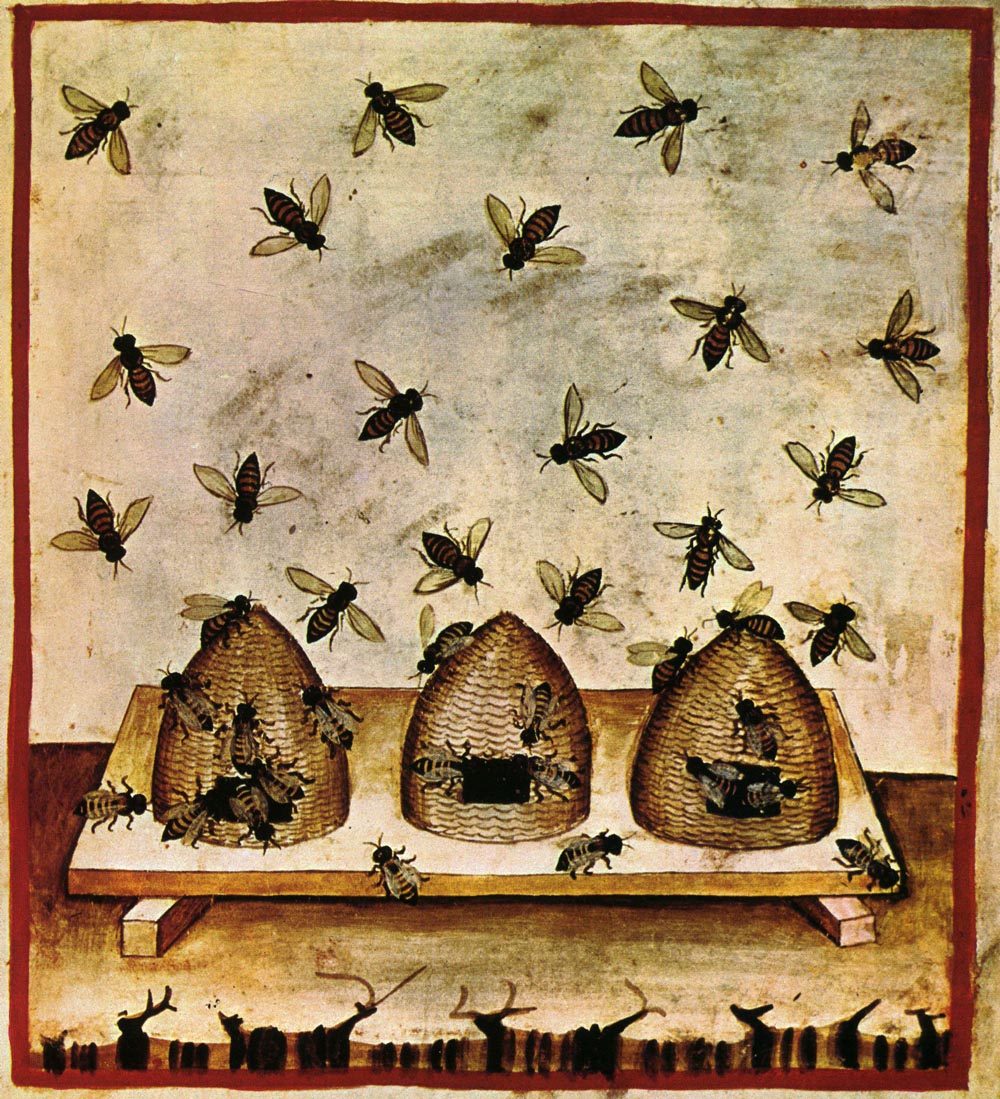|
Maracha-Terego District
Maracha District is a district in the West Nile sub-region, in the Northern Region of Uganda. It was formed in 2006 from Arua District. History Initially, the counties of Maracha and Terego were removed from Arua District to form a new, single district, which was also known as Maracha–Terego District or Nyadri District. From the district's inception, where to locate its headquarters had been a contentious issue. In February 2007, one group of elected officials from the district asked a court to block the location of the new district headquarters in an opposing location. After nearly five years of disagreement, Terego County opted to return to Arua District and Maracha County went on to form the new district on its own. Location The district is bordered by Koboko District to the north, Yumbe District to the north-east, and Terego District to the east and Arua City to the south. The Democratic Republic of the Congo is west of Maracha District. Maracha Town is approximately , ... [...More Info...] [...Related Items...] OR: [Wikipedia] [Google] [Baidu] |
Districts Of Uganda
As of 17 November 2020, Uganda is divided into 136 districts and the capital city of Kampala, which are grouped into four administrative regions. Since 2005, the Ugandan government has been in the process of dividing districts into smaller units. This decentralization is intended to prevent resources from being distributed primarily to chief towns and leaving the remainder of each district neglected. Each district is further divided into Counties of Uganda, counties and municipalities, and each county is further divided into Sub-counties of Uganda, sub-counties. The head elected official in a district is the chairperson of the Local Council (Uganda), Local Council five (usually written with a Roman numeral V). Below are population figures from the 2014 census (tables show population figures for districts that existed in 2014). __NOTOC__ Districts created since 2015 In September 2015, the Parliament of Uganda created 23 new districts, to be phased in over the next four years ... [...More Info...] [...Related Items...] OR: [Wikipedia] [Google] [Baidu] |
Arua
Arua is a city and commercial centre within the Arua District in the Northern Region of Uganda. Location Arua is approximately , by road, north-west of Kampala, the capital and largest city of Uganda, Arua is about , by road, west of Gulu, the largest city in Uganda's Northern Region. The geographical coordinates of the city of Arua are 03°02'07.0"N, 30°54'39.0"E (Latitude:3.035278; Longitude:30.910833). Arua sits at an average elevation of above sea level. Arua is closely bordered to the Democratic Republic of Congo in the west and South Sudan in the north which makes it a strategic location for business between Uganda and her two neighbors to the west and north. Due to its strategic location, Arua is also part of the Refugee program of hosting up to 20% of refugees entering into Uganda, annually. Overview Arua is an important base for non-governmental organizations working in the West Nile sub-region or serving Western Equatoria in South Sudan and the northeastern Democ ... [...More Info...] [...Related Items...] OR: [Wikipedia] [Google] [Baidu] |
Abdulatif Tiyua
Abdulatif Tiyua is a Ugandan retired military officer and former rebel leader. He served as a Uganda Army (UA) commander during the dictatorship of Idi Amin. When Amin was overthrown in 1979 during the Uganda–Tanzania War, Tiyua was imprisoned by the new Ugandan government. He was freed in 1985, when Tito Okello overthrew Ugandan President Milton Obote. When Okello was defeated by Yoweri Museveni's National Resistance Army, Tiyua joined an insurgency in northern Uganda, and eventually rose to deputy commander of the West Nile Bank Front rebel group. Following years of warfare, Tiyua was captured by rebels allied to the Ugandan government in southern Sudan in 1997, and was again incarcerated. After being released in 2000, he became chairman of a veterans association and has lobbied for his former rebel comrades to end their insurgency. Biography Early life and career Tiyua was born as a member of the Kakwa people in Maracha District, part of the West Nile Province of Uganda. ... [...More Info...] [...Related Items...] OR: [Wikipedia] [Google] [Baidu] |
Fish Farming
upright=1.3, Salmon farming in the sea (mariculture) at Loch Ainort, Isle of Skye">mariculture.html" ;"title="Salmon farming in the sea (mariculture">Salmon farming in the sea (mariculture) at Loch Ainort, Isle of Skye, Scotland Fish farming or pisciculture involves commercial animal husbandry, breeding of fish, usually for food, in fish tanks or artificial pen (enclosure), enclosures such as fish ponds. It is a particular type of aquaculture, which is the controlled cultivation and harvesting of aquatic animals such as fish, crustaceans, molluscs and so on, in natural or pseudo-natural environment. A facility that releases juvenile fish into the wild for recreational fishing or to supplement a species' natural numbers is generally referred to as a fish hatchery. Worldwide, the most important fish species produced in fish farming are carp, catfish, salmon and tilapia. Global demand is increasing for dietary fish protein, which has resulted in widespread overfishing in wild ... [...More Info...] [...Related Items...] OR: [Wikipedia] [Google] [Baidu] |
Boer Goat
The Boer or Boerbok is a South African breed of meat goat. It was selectively bred in the Eastern Cape from about 1920 for meat qualities and for the ability to survive by grazing on the thorn veldt of that region. It has been exported to many countries, and has been used to improve the meat qualities of other breeds. History The Boer goat was bred from the indigenous South African goats kept by the Namaqua, San, and Fooku tribes, with some crossing of Indian and European bloodlines being possible. They were selected for meat rather than milk production; due to selective breeding and improvement, the Boer goat has a fast growth rate and excellent carcass qualities, making it one of the most popular breeds of meat goat in the world. Boer goats have a high resistance to disease and adapt well to hot, dry semideserts. Characteristics Boer goats commonly have white bodies and distinctive brown heads. Some Boer goats can be completely brown or white or paint, which means ... [...More Info...] [...Related Items...] OR: [Wikipedia] [Google] [Baidu] |
Bee Keeping
Beekeeping (or apiculture) is the maintenance of bee colonies, commonly in man-made beehives. Honey bees in the genus '' Apis'' are the most-commonly-kept species but other honey-producing bees such as ''Melipona'' stingless bees are also kept. Beekeepers (or apiarists) keep bees to collect honey and other products of the hive: beeswax, propolis, bee pollen, and royal jelly. Pollination of crops, raising queens, and production of package bees for sale are other sources of beekeeping income. Bee hives are kept in an apiary or "bee yard". The keeping of bees by humans, primarily for honey production, began around 10,000 years ago. Georgia is known as the "cradle of beekeeping" and the oldest honey ever found comes from that country. The 5,500-year-old honey was unearthed from the grave of a noblewoman during archaeological excavations in 2003 near the town Borjomi. Ceramic jars found in the grave contained several types of honey, including linden and flower honey. Domestication of ... [...More Info...] [...Related Items...] OR: [Wikipedia] [Google] [Baidu] |
Goats
The goat or domestic goat (''Capra hircus'') is a domesticated species of Caprinae, goat-antelope typically kept as livestock. It was domesticated from the wild goat (''C. aegagrus'') of Southwest Asia and Eastern Europe. The goat is a member of the animal family Bovidae and the tribe Caprini, meaning it is closely related to the sheep. There are over 300 distinct breeds of goat.Hirst, K. Kris"The History of the Domestication of Goats".''About.com''. Accessed August 18, 2008. It is one of the oldest domesticated species of animal, according to archaeological evidence that its earliest domestication occurred in Iran at 10,000 calibrated calendar years ago. Goats have been used for milk, Goat meat, meat, Animal fur, fur, and Animal skin, skins across much of the world. Milk from goats is often turned into goat cheese. Female goats are referred to as ''does'' or ''nannies'', Entire (animal), intact males are called ''bucks'' or ''billies'', and juvenile goats of both sexes are ... [...More Info...] [...Related Items...] OR: [Wikipedia] [Google] [Baidu] |
Sesame
Sesame ( or ; ''Sesamum indicum'') is a flowering plant in the genus ''Sesamum'', also called benne. Numerous wild relatives occur in Africa and a smaller number in India. It is widely naturalized in tropical regions around the world and is cultivated for its edible seeds, which grow in pods. World production in 2018 was , with Sudan, Myanmar, and India as the largest producers. Sesame seed is one of the oldest oilseed crops known, domesticated well over 3,000 years ago. ''Sesamum'' has many other species, most being wild and native to sub-Saharan Africa. ''S. indicum,'' the cultivated type, originated in India. It tolerates drought conditions well, growing where other crops fail. Sesame has one of the highest oil contents of any seed. With a rich, nutty flavor, it is a common ingredient in cuisines around the world. Like other foods, it can trigger allergic reactions in some people. Etymology The word "sesame" is from Latin ''sesamum'' and Greek σήσαμον : ''sēsamon ... [...More Info...] [...Related Items...] OR: [Wikipedia] [Google] [Baidu] |
Millet
Millets () are a highly varied group of small-seeded grasses, widely grown around the world as cereal crops or grains for fodder and human food. Most species generally referred to as millets belong to the tribe Paniceae, but some millets also belong to various other taxa. Millets are important crops in the semiarid tropics of Asia and Africa (especially in India, Mali, Nigeria, and Niger), with 97% of millet production in developing countries. This crop is favored due to its productivity and short growing season under dry, high-temperature conditions. Millets are indigenous to many parts of the world. The most widely grown millets are sorghum and pearl millets, which are important crops in India and parts of Africa. Finger millet, proso millet, and foxtail millet are also important crop species. Millets may have been consumed by humans for about 7,000 years and potentially had "a pivotal role in the rise of multi-crop agriculture and settled farming societies." Descript ... [...More Info...] [...Related Items...] OR: [Wikipedia] [Google] [Baidu] |
Matooke
Matoke, locally also known as matooke, amatooke in Buganda (Central Uganda), ekitookye in southwestern Uganda, ekitooke in western Uganda, kamatore in Lugisu (Eastern Uganda), ebitooke in northwestern Tanzania, igitoki in Rwanda, Burundi and by the cultivar name East African Highland banana, is a starchy triploid banana cultivar originating from the African Great Lakes. The fruit is harvested green, carefully peeled, and then cooked and often mashed or pounded into a meal. In Uganda and Rwanda, the fruit is steam-cooked, and the mashed meal is considered a national dish in both countries. Matoke bananas are a staple food crop in Uganda, Kenya, Tanzania and other Great Lakes countries. They are also known as the Mutika/Lujugira subgroup. The medium-sized green fruits, which are of a specific group of banana, the East African Highland bananas (''Musa'' AAA-EA), are known in the Bantu languages of Uganda and Western Kenya as ''matoke''. Cooking bananas have long been and still ... [...More Info...] [...Related Items...] OR: [Wikipedia] [Google] [Baidu] |
Mango
A mango is an edible stone fruit produced by the tropical tree ''Mangifera indica''. It is believed to have originated in the region between northwestern Myanmar, Bangladesh, and northeastern India. ''M. indica'' has been cultivated in South and Southeast Asia since ancient times resulting in two types of modern mango cultivars: the "Indian type" and the "Southeast Asian type". Other species in the genus ''Mangifera'' also produce edible fruits that are also called "mangoes", the majority of which are found in the Malesian ecoregion. Worldwide, there are several hundred cultivars of mango. Depending on the cultivar, mango fruit varies in size, shape, sweetness, skin color, and flesh color which may be pale yellow, gold, green, or orange. Mango is the national fruit of India, Pakistan and the Philippines, while the mango tree is the national tree of Bangladesh. Etymology The English word ''mango'' (plural "mangoes" or "mangos") originated in the 16th century from the Por ... [...More Info...] [...Related Items...] OR: [Wikipedia] [Google] [Baidu] |
Maize
Maize ( ; ''Zea mays'' subsp. ''mays'', from es, maíz after tnq, mahiz), also known as corn (North American and Australian English), is a cereal grain first domesticated by indigenous peoples in southern Mexico about 10,000 years ago. The leafy stalk of the plant produces pollen inflorescences (or "tassels") and separate ovuliferous inflorescences called ears that when fertilized yield kernels or seeds, which are fruits. The term ''maize'' is preferred in formal, scientific, and international usage as a common name because it refers specifically to this one grain, unlike ''corn'', which has a complex variety of meanings that vary by context and geographic region. Maize has become a staple food in many parts of the world, with the total production of maize surpassing that of wheat or rice. In addition to being consumed directly by humans (often in the form of masa), maize is also used for corn ethanol, animal feed and other maize products, such as corn starch and ... [...More Info...] [...Related Items...] OR: [Wikipedia] [Google] [Baidu] |









